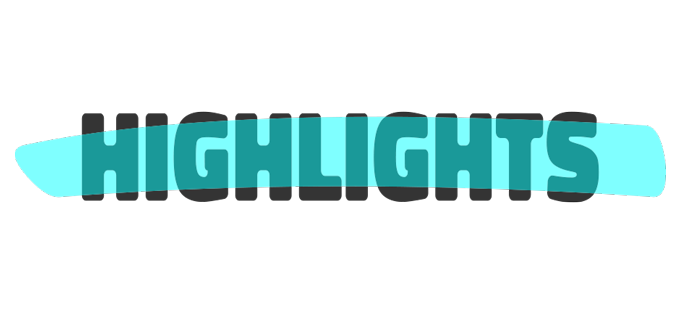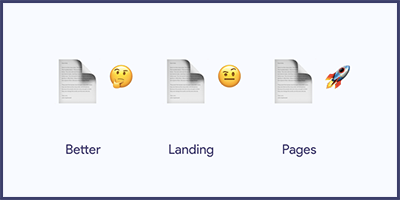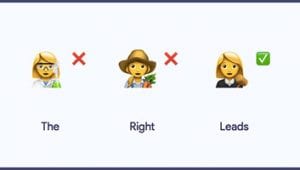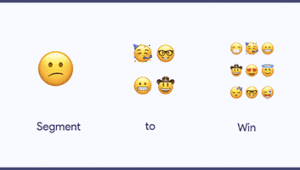How to Design Better App Landing Pages, Faster (And Without 100+ Iterations)
? ?
Better
? ?
Landing
? ?
Pages
This post was written by landing page expert Pedro Cortés. Pedro helps SaaS startups use their website as a predictable and repeatable way to acquire customers. You can learn his step-by-step process for landing page design with his free course.
I’m constantly amazed by how much time and iterations companies go through before they redesign their website just trying to get a better landing page…
Now, what if I told you that it’s possible to design great landing pages with very few iterations?
You see, it’s all about gathering the right information upfront, instead of discovering it over time through iterations.
You just need the right process to discover the message that will convert, and ways to turn this message into a great landing page.
That’s what I’ll be teaching you in this step-by-step guide. I guarantee that this will make your process designing app landing pages at least 2x faster!
#1 – Replace Iterations and “Split tests” with the real reasons why people buy
I’ll say it… Around 90% of iterations and split tests are totally unnecessary!
Those iterations revolve around subjective stuff like colors, minor tweaks in wording or other factors that barely move the needle and make your projects last forever. ?
What if you could define all your landing page content before even thinking about designing them?
This way, your team (and/or clients) will be able to review the overall message objectively before focusing on the small details.
To do this, you’ll need to uncover the real reasons why people buy… Their objections, questions, confusions, the words they use, etc…
You’ll find out how to do that in the next section.
#2 – How to find the real reasons why people buy (or don’t)
Let’s be honest, even if it doesn’t seem that way when you’re trying to optimize a landing page, people are very predictable…
Prospects already told you why they bought, or why they didn’t… you just need to discover how and where they gave you that information.
#2.1 – How to find people’s objections
Objections are merely a set of questions people need to get answered before they are ready to make a buy decision.
It’s simple: If you don’t answer those questions… people don’t buy.
Here are the best places to uncover objections
The list below has some of the best places I’ve found to identify the reasons why people buy.
It’s pretty universal btw… It worked with my clients ranging from consulting calls with small startups to bigger redesign projects for 8-figure a year companies.
- Calls with your customers or prospects: if you talk with your customers somewhat frequently (which you should) you can ask to record the calls so you can review how they describe their problems and your product.
- Reviews: if you’re getting product or app reviews, you can understand why people took the time to write a review about your product (except the generic ones like “Amazing product!”).
- Competitor analysis: you can analyze your competitors and see what their customers are saying about them in their reviews or on social media. You can also find tons of insights on the benefits people value, the questions they have or just what they’re saying about your competitors’ products.
- Frequent questions (or support questions): people will always have questions that your website hasn’t answered. It’s very important to gather the most common/important questions and make sure that the answers are prominent throughout your new landing pages (and ideally your entire website).
- Misconceptions: let’s face it, people will always be confused about some part of your product. Problems come when that confusion keeps them from making the decision of buying or even just trying your product. It’s important for you to discover the most common misconceptions, and clearly address those in your landing page.
#2.2 – Find the EXACT words for your landing page
Next you’ll need to find the EXACT words people use to describe their problems, the benefits or even similar products.
You’ll need to speak their language!
Why? Because if you’re not using the same terms the customers use, it’s like you’re speaking a different language to them… How will they understand the benefits? ?
How to find the right words to use
Go through all the info you gathered for the objections and try to notice patterns around what words people use.
What to keep an eye for:
- Problems: How are customers describing their problems? What terms do they use?
- Benefits: How are customers describing the benefits of your product? What patterns have you noticed? What benefits do they mention more frequently?
- Solutions: Solution-aware people are usually closer to buying. Those people will be easier to convert. Notice how they describe the solution they would like to their problem. Make your message match their words.
#3- Design your app landing pages around the objections, segments, and purchase motivations
Now that you have all the necessary info you can start defining the content of your landing page.
In order to do this better and faster we’ll use the exact same structure… EVERY time!
“How is this possible?” “Wouldn’t you need a specific structure depending on the company?”
No… you see, humans are predictable, and they don’t change that much over time!
Marketers, salespeople and copywriters have been studying how to “convert” people for at least 100 years. They figured out the exact path needed to convert people into customers.
The only things that change is what the specific content inside the sections is, but it’s important to follow the same overall structure every time otherwise there’s no predictable process to generating conversion-driven landing pages consistently over time.
The ideal structure for a landing page

I took the lessons from some of the best marketers and copywriters of all time and applied them to today’s most popular selling medium… the internet.
I’ve used their processes and turned it into a formula for a great landing page.
Here’s the formula for a conversion-driven landing page
- The Header (the Top of the Page) – the goal of this section is to create the right first impression and briefly present what the product is about in a way that creates curiosity and entices the visitor to keep browsing. If you don’t do it right, around 90% of your traffic will leave, and you’ll have no chance of converting them!
- Initial Social Proof – right below your header you should introduce some sort of social proof in order to establish authority with regard to the problem the product is solving.
- Introduce the Problem – probably the most overlooked section on all app landing pages. This section is a great opportunity to remind your potential customers of how painful their problem is and how much time/money they’re losing. This creates an amazing impression. Showing that you know their pain points and that your solution is tailored to their needs makes it much easier to sell.
- How it Works – this is a common section among app landing pages, but it’s rarely done right. This is the best place to show that the product is easy to use, faster, better, or whatever benefit the product brings to the table while fixing their problem at the same time.
- Reinforcing Benefits – Take the objections you’ve identified above and answer them after explaining your product to reinforce all of your benefits and make people believe that the product truly solves their problem.
- More Social Proof – now that you’ve shown how amazingly beneficial the product is, it’s time to show / reinforce that a lot of other people (people relatable to your target customers) are getting the results the ideal customers want out of the product.
- Final CTA – since the visitors are almost sold on the product at that point, you need to have another Call-to Action (CTA) so people can convert without having to scroll back to the top of the page.
- Alternate CTA – regardless of how good your app landing pages are, some people just won’t be ready to convert. This means that you need an alternative for them. This alternative CTA requires less commitment while still allowing you to either get the prospect’s contact informations to convert them later (e.g. like a content upgrade), or to give them more information and help them make the buy decision (e.g. feature pages).
Once your app landing pages are starting to perform, you can use Highlights to monitor and improve performance. ?
Want to see the breakdown of the best app landing pages using the above formula? Here’s an article on that.





Trackbacks & Pingbacks
[…] it match what our product really does? If it doesn’t, maybe you ought to redesign your product landing pages. […]
Leave a Reply
Want to join the discussion?Feel free to contribute!